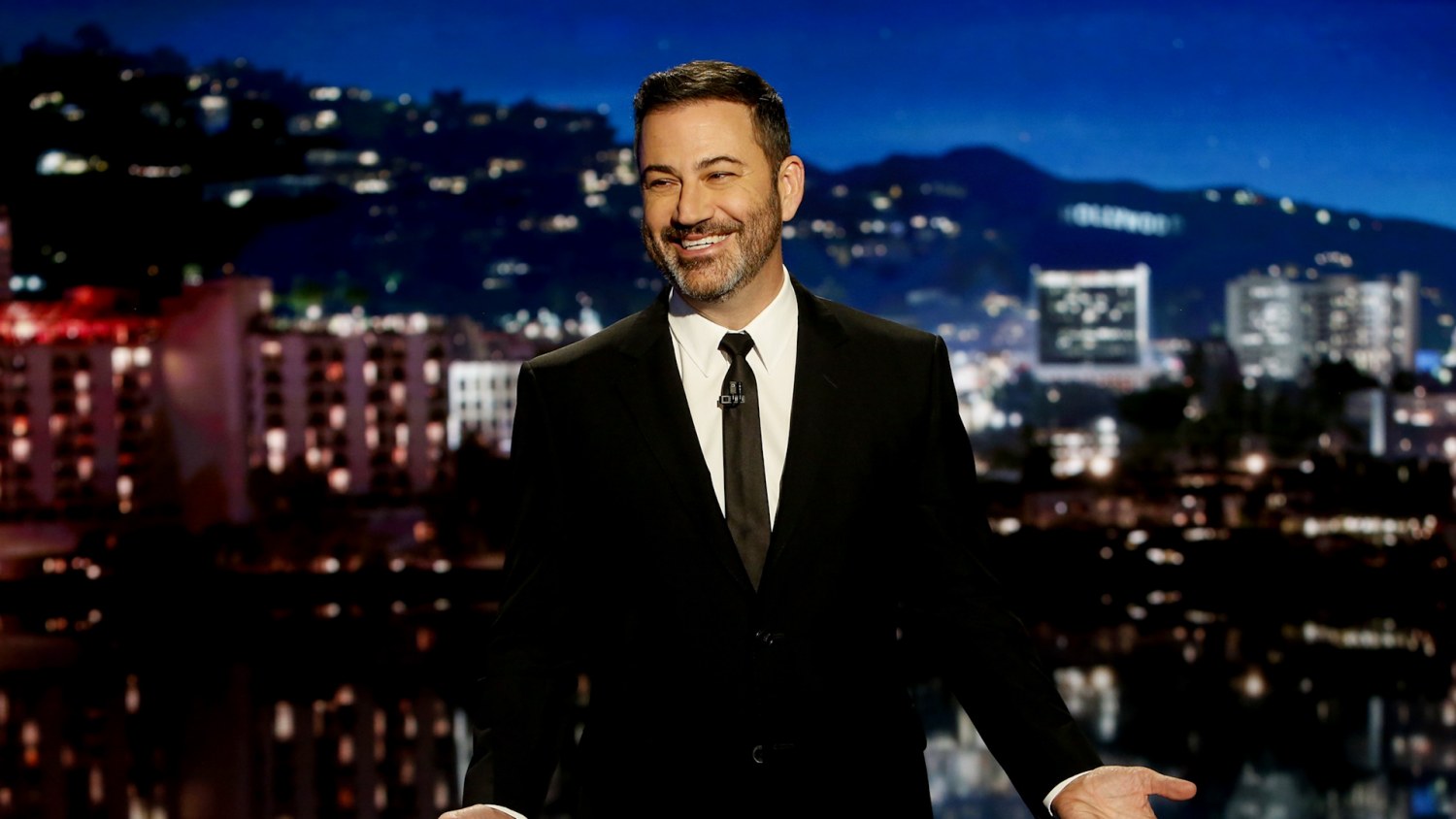After several weeks off the air, the late-night television presenter returned to the limelight, combining humor with introspection to address recent disputes, and maintaining his long-standing practice of satirizing the former U.S. president through political comedy.
Jimmy Kimmel’s long-anticipated return to his late-night show came after a temporary suspension from ABC that fueled speculation across the entertainment industry and social media. Viewers were eager to see how he would address both the circumstances of his absence and the increasingly polarized cultural climate. When the cameras turned on again, Kimmel did not disappoint. His opening monologue acknowledged the recent turbulence but kept the tone measured, attempting to reduce tensions while still leaning into his trademark wit. True to form, he also took pointed—but carefully delivered—jabs at Donald Trump, continuing a dynamic that has defined much of his political comedy in recent years.
For years, Kimmel has been one of late-night television’s most recognizable figures, balancing lighthearted celebrity interviews with commentary on current events. His latest return illustrates the delicate tightrope modern hosts must walk: entertain, critique, and stay culturally relevant while avoiding the kind of backlash that can derail even established careers. By signaling reconciliation and steadiness in his first episode back, he sought to reassure audiences and network executives alike that his show remains a dependable space for humor and reflection during turbulent times.
A cautious return following a tumultuous hiatus
The suspension of Kimmel by ABC was never openly clarified, which led to speculation regarding its underlying cause. Some speculated it was due to private conflicts, whereas others believed it could have been a planned pause after intense political discussions on air. Regardless of the reason, the hiatus stirred interest and attracted more attention to his eventual return.
On his initial evening returning, Kimmel tackled the break with a mix of self-awareness and subtlety. He didn’t focus on specifics but recognized the strangeness of being absent from the broadcast. His remarks contained mild humor about the situation—deliberately done to ease any discomfort and steer the storyline back. Rather than making it a grand affair, he used it to adjust the ambiance of his program.
Este enfoque es significativo porque la televisión nocturna se ha transformado en un indicador cultural. Los presentadores son más que solo animadores, actúan como comentaristas informales que influyen en el diálogo público. Al mostrar humildad y serenidad en lugar de indignación, Kimmel se presentó como una persona dispuesta a aprender y ajustarse, una característica relevante en una época donde la opinión pública cambia rápidamente y la cultura de la cancelación sigue siendo una amenaza latente.
Finding a balance between humor and critique in a divided environment
Although seeking to ease tensions, Kimmel did not shy away from the incisive political commentary that brought him fame. His return episode included timely remarks about Donald Trump, a consistent figure in his political satire. Nonetheless, this time his humor appeared more measured: still humorous and incisive, but somewhat less aggressive than in earlier monologues. This nuanced adjustment indicates a wish to stay pertinent while preventing needless provocation.
Kimmel has traditionally balanced humor with social commentary. During the previous president’s tenure, his critiques of Trump were frequently among the most widely shared segments of his program, receiving both acclaim and disapproval. As time passed, he joined a larger cohort of late-night hosts acting as comedic oppositions to political authority. However, since those past conflicts, the cultural scene has changed. Today’s audiences are more divided, and direct political criticisms can occasionally push viewers away instead of bringing them together.
By threading humor through measured criticism, Kimmel demonstrated a refined strategy: keep the jokes coming but with an awareness of audience fatigue and the risk of deepening divides. For example, instead of lengthy tirades, his Trump material was delivered as short, pointed remarks tucked between self-deprecating humor and pop-culture references. The result felt fresher and less combative while still satisfying fans who expect political bite.
The transformation of late-night TV in a digital age
Kimmel’s comeback holds importance beyond his own career, impacting the whole late-night scene. Conventional talk shows encounter tough rivalry from streaming platforms, viral clips on social media, and independent online creators. Younger audiences typically prefer watching short clips on YouTube or TikTok instead of watching entire shows. To stay significant, hosts need to produce moments that succeed both on TV and as shareable content online.
Kimmel seems well aware of this shift. His comeback monologue was crafted to deliver memorable lines that could travel across platforms while also serving the live studio audience. His producers clipped and shared key segments within minutes of airing, and fans quickly circulated them on Twitter, Instagram, and other platforms. This strategy ensures that even those who no longer watch network TV can encounter his brand of comedy.
Moreover, the return highlights how late-night shows continue to blend entertainment with social commentary. Audiences expect levity but also insight, particularly when cultural tensions run high. Kimmel’s ability to balance those expectations—addressing his suspension with honesty, defusing drama, and still poking fun at powerful figures—demonstrates why he remains competitive in a crowded media landscape.
Rebuilding trust with the network and the audience
Underneath the humor, Kimmel’s return on his initial evening also conveyed a subtle message to ABC and advertisers: reliability. Networks perform well with consistency, particularly during prime time. Extended disputes or an uncooperative host can deter both sponsors and audience members. By maintaining a relaxed tone and positioning his break as a period of development, Kimmel assured stakeholders that his show remains capable of attracting viewership without generating negative press.
For his audience, the return was a moment of reassurance as well. Kimmel has built a loyal fan base by blending comedy with relatable humanity. Over the years, he has shared emotional personal stories—from his son’s heart condition to his own missteps—in ways that make him feel approachable. His gentle handling of this comeback played into that persona, signaling that he remains both authentic and self-aware.
Still, the move was not without risk. Some fans might have expected a fiery defense or a detailed explanation about the suspension. By choosing restraint, Kimmel may have disappointed those seeking confrontation. Yet this choice could pay off long term by keeping the focus on his work rather than extending a cycle of controversy.
The significance of the revival for satire in politics
Kimmel’s decision to continue targeting Trump while toning down direct confrontation reflects a broader trend in political comedy. Audiences are increasingly exhausted by nonstop outrage and hyperpartisan commentary. Comedians are experimenting with ways to stay topical without alienating viewers who crave both laughter and relief.
In this context, Kimmel’s monologue acts as an example of how late-night programs can innovate. Combining gentle satire with self-effacing humor and thoughtfully selected cultural allusions, he maintained the show’s entertainment value while being mindful of the unpredictable political climate. His method indicates that effective political humor today demands flexibility: the skill to critique without wearing out the audience or causing division.
It also hints at a possible repositioning for the next U.S. election cycle. As Trump remains a central figure in Republican politics, comedians like Kimmel will continue to address him. But the tone may shift from raw anger to weary amusement, offering audiences a break from intensity while still holding public figures accountable.
Maintaining significance and audience engagement
Whether this measured comeback will keep Kimmel at the forefront of late-night remains to be seen, but early reactions suggest a positive reception. Social media buzzed with support for his calm tone and clever humor, while critics noted his ability to acknowledge controversy without amplifying it. Ratings for the return episode were strong, and the clips quickly trended online.
For Kimmel, sustaining this momentum means staying nimble. He must continue creating viral, shareable moments while keeping the full-length broadcast engaging. He will also need to navigate the unpredictable intersection of entertainment and politics as the U.S. moves closer to another contentious election season.
From a broadcast standpoint, his seamless return highlights the importance of seasoned anchors capable of managing challenging situations. While late-night TV is transforming, maintaining adaptability—alongside comedic sharpness—remains a successful strategy. Kimmel’s return demonstrates that despite the era of immediate criticism and digital upheaval, a skillfully delivered monologue can reshape a story and regain viewers.




